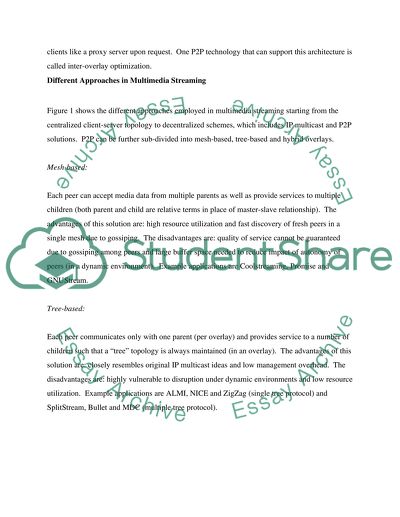Cite this document
(“Peer to Peer Multimedia Streaming Essay Example | Topics and Well Written Essays - 3000 words”, n.d.)
Retrieved from https://studentshare.org/technology/1534476-peer-to-peer-multimedia-streaming
Retrieved from https://studentshare.org/technology/1534476-peer-to-peer-multimedia-streaming
(Peer to Peer Multimedia Streaming Essay Example | Topics and Well Written Essays - 3000 Words)
https://studentshare.org/technology/1534476-peer-to-peer-multimedia-streaming.
https://studentshare.org/technology/1534476-peer-to-peer-multimedia-streaming.
“Peer to Peer Multimedia Streaming Essay Example | Topics and Well Written Essays - 3000 Words”, n.d. https://studentshare.org/technology/1534476-peer-to-peer-multimedia-streaming.


